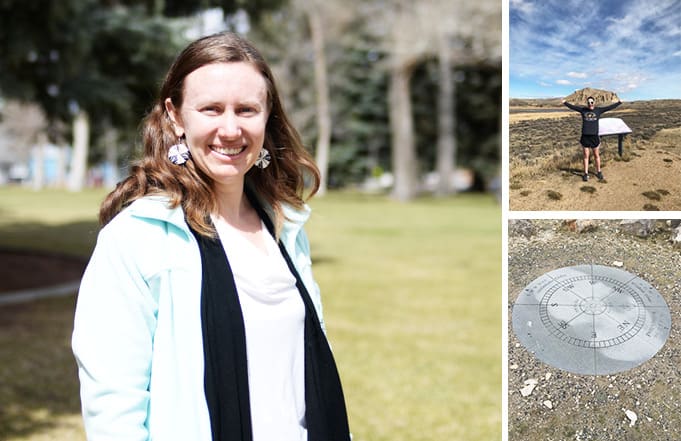April 17, 2017
History professor Erin Zavitz asked her students to follow in the footsteps of Lewis and Clark to learn more about the past and present of their home state.

Zavitz’ History 101 students visited historic sites from the Lewis and Clark expedition. Their assignment was to take pictures, read a journal entry from the expedition, and write a short reflection on how they felt and what had changed in 200 years.
On Lewis and Clark, Professor Zavitz said, “They allow us to both celebrate and question myths about the American West. They had a more harmonious relationship with the Native Americans. It gives you a history that can be more positive. There’s an innocence to early fur traders and explorers, but you have to ask, what else comes along with their explorations?”
As she envisioned, many of the students felt engaged in the study of local, public history.
Augustina Wofford said, “Being able to take a quick drive to a historic point, and then reading about it in the Lewis and Clark Journals really made this assignment more personable.”
Tate Langel visited the Rattlesnake Cliffs in our very own Beaverhead County. “They killed a deer and were here for over an hour. Lewis even described the cliffs in detail noticing the crevices and rattlesnakes all around. It was so amazing to look through someone else’s eyes from 200+ years ago.”
In the students’ photographs, the presence of the modern world is felt through freeways and telephone lines. Still, the geography looks relatively untouched compared to more urbanized areas of the country. Even so, some students, like Caitlin Cooper, were envious of Lewis and Clark’s journey through the wild landscapes of uncharted Montana:
On Beaverhead Rock, she said, “I started out again at the mountains, imagining what this place was like before all the construction. Before all the litter found its place among the rocks. The way Lewis and Clark described it seemed more like a desert. They mentioned the ground being well-walked. What would they think now?”
Professor Zavitz and her students’ combined their work on this project into an interactive map that combines writing and photography. It can be viewed online in the link provided.